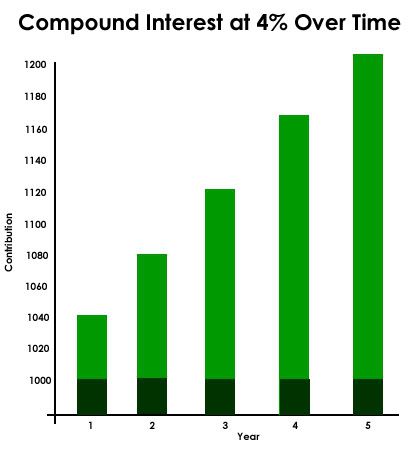Anyone who has ever had a savings account has received compound interest. For example, suppose you place RM1000, which is your present value (PV), in a savings account that pays 4% interest annually. How will your savings grow? At the end of the first year you will have earned 4% or RM40 on your initial deposit of RM1000, giving you a total of RM1040 in your savings account. That RM1040 is the future value of your investment that is the value of your investment at some point in time.

Assuming you leave the RM40 interest payment in your savings account, known as reinvesting, what will your savings look like at the end of second year? You begin the second year with RM1040, and you add the interest you earned in the second year (4% on RM1040 for a total of RM41.60 in interest) and you end up with RM1081.60.
What will your savings look like at the end of 3 years? 5 years? Figure 1.0 below illustrate how an investment of RM1000 would continue to grow for the 1st 5 years at a compound interest rate of 4%. Notice how the amount of interest earned annually increase each year because of compounding.
Until now, you should know why you can earn more interest during the following year that you did during the first. Simply because you now earn interest on the sum of the original principal, or present value and the interest you earned in the first year,. In effect, you are now earning interest on interest, which is the concept of compound interest.

Ah Long knows this best !